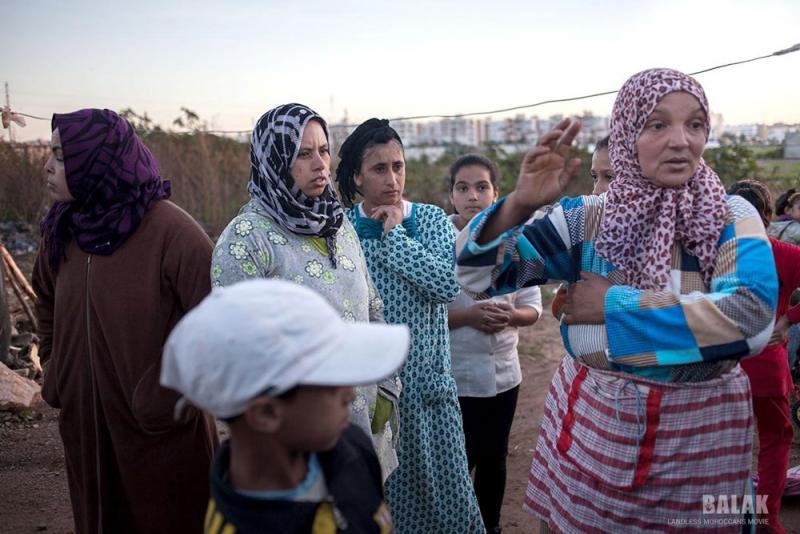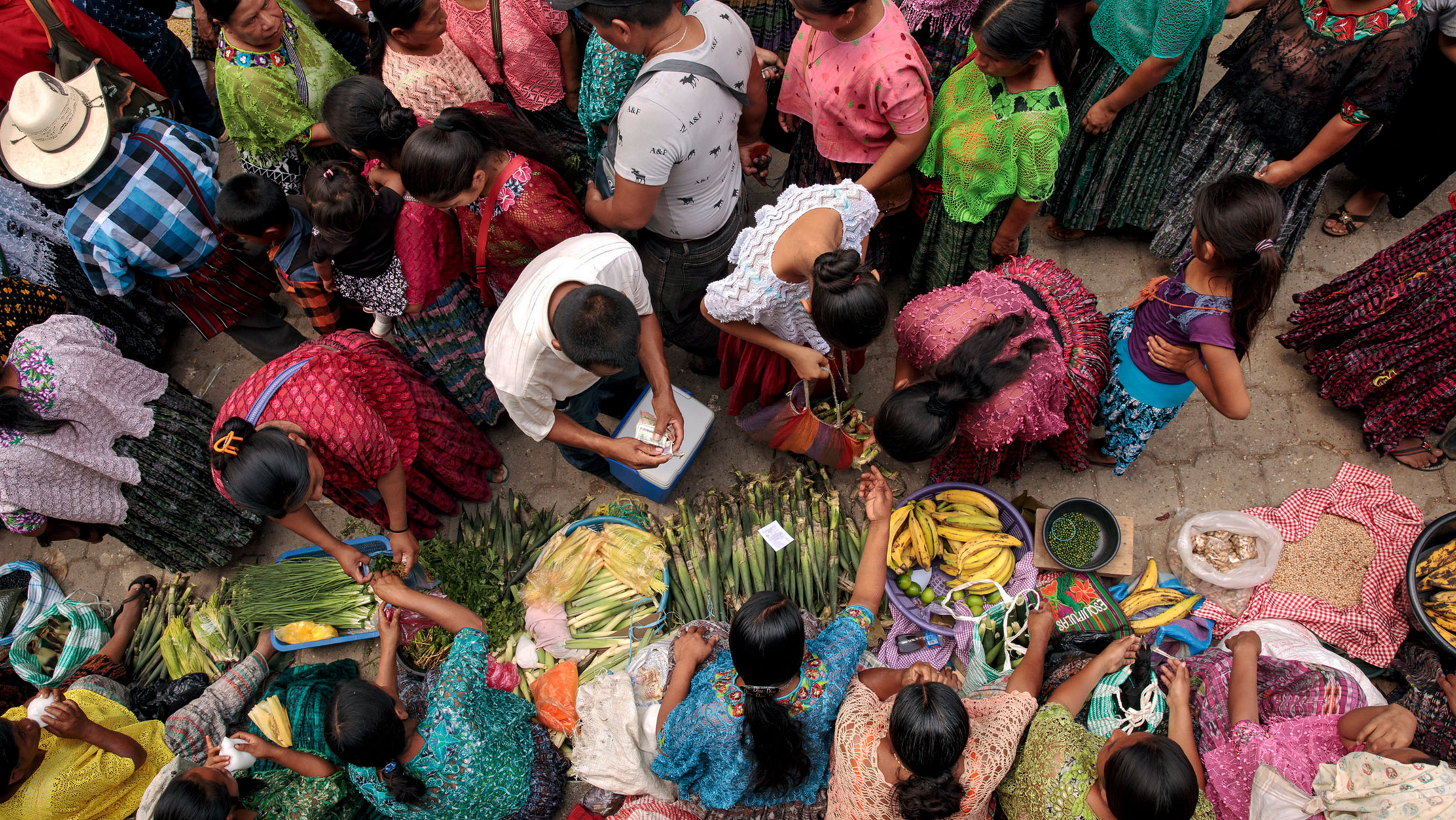In a world where expropriation and corporate power is the norm, sociologist, filmmaker and Franco-Moroccan activist Soraya El Kahlaoui made a film on the struggle of the Ghich L’Oudaya tribe in Morocco, and the role of women in particular.
Formally educated in rights and sociology and self-taught documentarian, El Kahlaoui follows the urban struggle from the post-revolutionary context of Morocco. For the last few years, El Kahlaoui has traced the Ghich L’Oudaya tribe’s struggle for the right to housing; they have been expropriated from their land, and for the most part, without compensation.
Trailer
AWID: Can you tell us about yourself and your project?
Soraya El Kahlaoui : Whether in my research or my activism, I intersect two approaches: I’m a “participatory sociologist.” That is, I participate alongside the people. I don’t do research like most sociologists – as observers, removed from the social reality they’re studying. I assume that my role as a sociologist is to participate, to support and to publicize the same struggles I’m observing.
I met many inhabitants of the Ghich L’Oudaya tribe in 2014, when I permanently moved to Morocco. When I met them, I was learning filmmaking–it was one of my first phases of the film. The community asked me to film them. Months and years passed and I found myself with two years worth of images and that’s how, little by little, the idea of a documentary came to be.
“I don’t do research like most sociologists – as observers, removed from the social reality they’re studying. I assume that my role as a sociologist is to participate, to support and to publicize the same struggles I’m observing.” - Soraya El Kahlaoui, extract from the documentary Landless Moroccans
You should know that I am a total amateur in the field. I didn’t study cinema, I’d never held a camera before. The first time I filmed was in 2012 when I was in Syria with a collective. We went there to help the Syrian population at the time, who, already then, were severely suffering from food shortages etc. It’s there that I taught myself to film, with my phone actually. I had gotten a taste for it and so, they bought me a little amateur camera for my birthday, which led to the creation of the Landless Moroccans documentary, which I’m currently working on.
AWID:. You had previously written an article on the invasion of Femen in Morocco, with a critical eye on what it means to be an ally and inserting yourself in the struggle. Can you tell us about how you developed this vision of participation in the struggle?
SEK: I think that supporting struggles and being close to the people and their context, comes from decolonial and activist approaches that I’ve come across in this group and who have been a part of my own development and political education. In the decolonial approach, one of the things that we learn in particular, is to respect the claims and ways of living of the people who are struggling. And to support without imposing our own vision of things or alienating or applying a model of emancipation, copy and pasted onto any struggle.
The decolonial approach has had a lot to do with my own maturity and certainly in learning modesty. It taught me to take time when inserting myself among people who are struggling for their housing rights, and taught me to adjust my perspective. This also developed from my education in anthropology, helping to deconstruct Eurocentric, and even classist, prejudice about people who are resisting and who become the oppressed classes.
It’s an approach that’s really close to my heart. I hope and I believe that the community will see itself in the documentary because the inhabitants say a lot in this documentary. I tried to put them and their struggle forward as well as their own conception of the politics, their own conception of emancipation and to really put forward their claims through images. I’d like to show the public how people who are expropriated from their land because of urban modernization survive. And how this modernization ends by rendering them stateless. That’s why the Moroccan Arabic title of the documentary is “ واش حنا مغاربة؟? ” which roughly translates into “Are we still Moroccan?” It’s a question that is repeated over-and-over by inhabitants because of the way they were expropriated from their land.

AWID: Can you tell us more about the inhabitants and put the expropriation happening in Morocco and around the world into context?
SEK: The inhabitants of Douar Ouled Dlim belong to the Ghich L’Oudaya tribe, an ancient warrior tribe who were given the land in 1838 by Sultan Moulay Abderrahmane, in exchange for their arms. This is why the Ghich L’Oudaya tribe converted from a war tribe into a peasant-agricultural tribe. It’s important to know that this land, which counted about 400 hectares of fruit trees, is extremely fertile and fed the city of Rabat.
The moment colonial power came to Morocco, there was an opportunity for land expansion out of the city of Rabat, where there was little private property. Finding itself against a collectively owned land system, the colonial power broke down the collective, the commons and the tribes—a strategy put in place in order to establish colonial power and penetrate and dominate the territory.
The colonial power created a statute called “le Statut des terres collectives” (the Collective Lands Statute) and withdrew full land ownership from the inhabitants. The inhabitants had nothing but the right of enjoyment of their land, full ownership had been transferred to the Office of Indigenous Affairs. This is how, little by little, the land of the Ghich L’Oudaya tribe was expropriated to serve as land reserve for the expansion of the city of Rabat.
The statute remained at the time of independence, which meant that the Ghich land in Morocco, like all collective lands, belongs to the Ministry of the Interior. Thus, full ownership was not transferred back to inhabitants, but passed onto the Office of Indigenous Affairs and the Ministry of the Interior. The practice of expropriation, land grabbing has since continued.
In the 80s in particular, the expropriation of Ghich land really accelerated because the city of Rabat started to expand and these lands were reserve, not only for big urban projects, but also for land grants to civil servants as a way to buy their loyalty.
During these years, most of the Ghich land was taken and in particular, the development of the Hay Ryad neighbourhood was decided, the highest standing neighbourhood of Rabat, which sits on Ghich L’Oudaya land. They evicted the inhabitants to construct villas and luxury buildings.
In 2003, a Memorandum of Understanding was signed by the Interior Minister who ceded the Douar Ouled Dlim land, about 80-90 hectares of land, to the Société d’aménagement Ryad, a real estate firm hired to subdivide the Hay Ryad neighbourhood.
So, for a symbolic 0 dirham, in other words free, the Société d’aménagement Hay Ryad gained ownership of the land. Within the Memorandum of Understanding, they invoked the “City without slums” program, using the social rhetoric against substandard housing, to expropriate and privatize Ghich land, 90 hectares spread across the middle of Rabat. . They dislocated a population, privatized land and constructed buildings in its place.
In 2014, when I met with inhabitants from Douar Ouled Dlim, they had completely demolished the neighbourhood. On top of that, they decided to add criteria to the compensation, which left children from mothers from the Ghich tribe without compensation. The State is putting forward patriarchal legislation by not permitting children of Ghichiya mothers from benefiting from their mothers’ heritage. Compensation stops at women. Why? Because women aren’t considered a head of household.
According to the inhabitants, 126 families still haven’t been compensated because of this injustice against women and their descendants. It’s an economic legislation that serves the the ruling class. It’s unbelievable that the children of Ghichiya mothers weren’t compensated in 2014 and to this day, the problem has not been resolved.
In my readings, I came across the 2009 testimony of a social services official who was already complaining about the compensation criteria being vague and ever-changing. The list of beneficiaries was constantly modified, not at all transparent and that there was a lot of underlying corruption. What we can maybe assume, although there is no proof, is that certain lots allocated to inhabitants were given to foreigners with resources, which meant that in 2014, a patriarchal criteria was invented to cut off all the descendants from Ghichiya mothers. Not only are descendants of single mothers not compensated, but also in a really bizarre way, women whose husband’s are Ghichi are also not compensated. So, if a woman is married to a tribe member, she’s not compensated, and if a woman is married to a foreign non-member of the tribe, she is compensated. Frankly, these criteria make absolutely no sense, apart from removing certain people from the list of beneficiaries.
AWID: You’ve been very concise in your explanation of the situation. It’s a phenomenon we see all over the world and which seems to stem from neoliberal capitalist development.
It’s even more interesting to hear the gendered aspect of the problem. What place do women hold in the internal strategy of this struggle?
SEK: Women are very present in the struggle, just as they are very present in the film. It’s important to know that in all struggles around collective land, women are always placed at the forefront. Each time there is an expropriation of collective land, it’s always them who are left out, and who lose their right to compensation. The presence of women in the fight is also explained in the historical context of women’s marginalization and the resistance of these marginalized women.
In the case of Douar Ouled Dlim, the fact that women are at the forefront can also be explained by the fact that these women protect men who are victims of direct police repression—imprisonment, clubbing, etc.
There is also a gendered division within the struggle. The men will negotiate with the associations and the politicians, and are in charge of the formal aspects, but the women lead the day-to-day struggle. For example, the women are always in the camp, they are the ones who take care of the home and lead the demonstrations and rallies. It’s the women who face the police while the men stay behind or don’t come at all for fear of repression or to avoid arrest.
There is strong solidarity between men and women and a beautiful complementarity.
So, for a person lathered in European concepts and prejudice like me for example, it’s also a good lesson, a good slap in the face!
